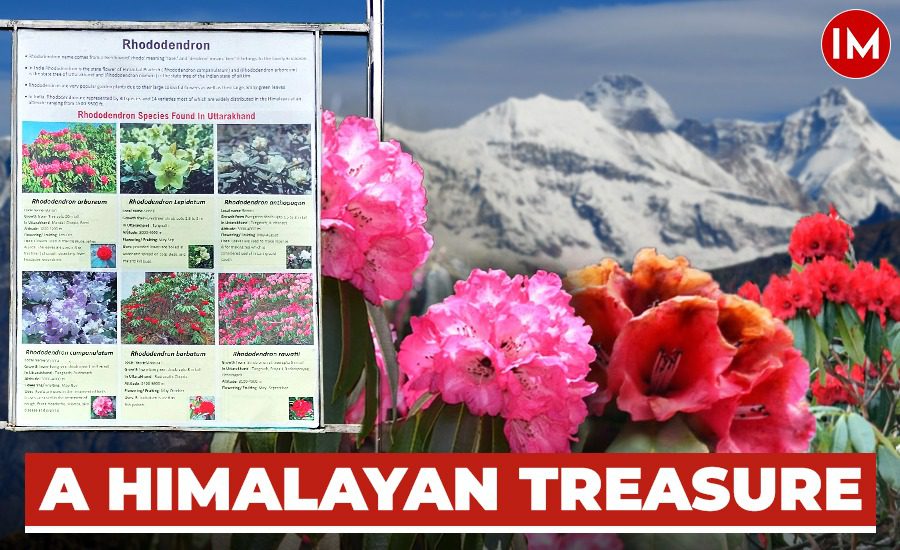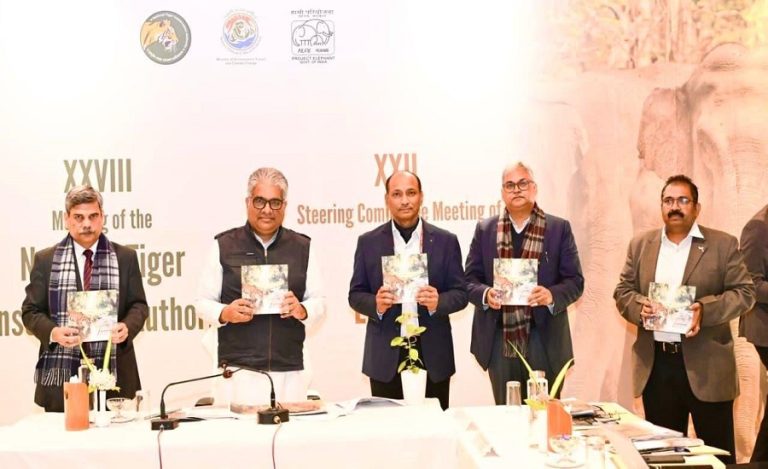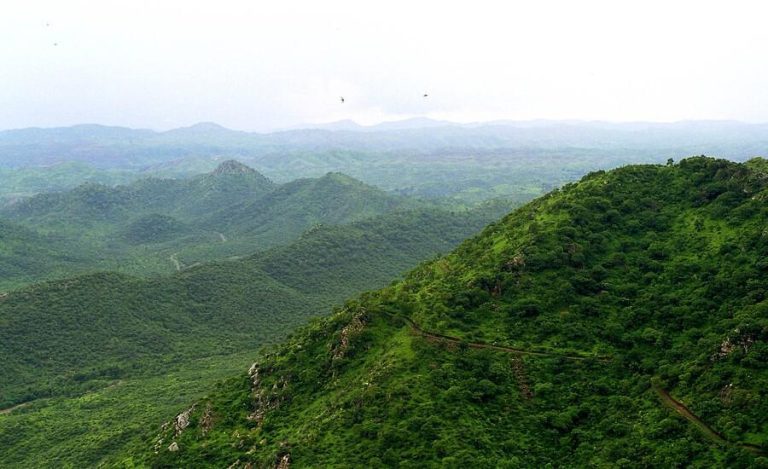In the scenic town of Munsiyari, tucked away in Uttarakhand’s Pithoragarh district, lies a botanical marvel that has caught the attention of nature enthusiasts and botanists alike. The Research Wing of the Uttarakhand Forest Department has developed a unique garden dedicated to Rhododendron species, the first of its kind in the entire Indian Himalayan Region. This garden is the result of four years of dedicated effort, spans over one hectare, and is home to 35 species of Rhododendron, including five species native to Uttarakhand.
Rhododendron, a genus comprising approximately 1,000 species, is mainly found in temperate regions across Asia, North America, and Europe, as well as in tropical areas of southeast Asia and northern Australia. These plants are celebrated for their striking clusters of vibrant, large flowers, making many species favored choices for ornamental gardens and parks. They typically present as evergreen or deciduous shrubs and small trees, characterized by sturdy stems and broad, leathery leaves.
A LABOR OF LOVE AND SCIENCE
The creation of this Rhododendron garden was not a simple endeavor. It required the meticulous efforts of the Research Wing under the funding of the Uttarakhand Government. In a conversation with Indian Masterminds, IFS officer Sanjiv Chaturvedi, who played a pivotal role in this project, shared insights into the development process. “Growing Rhododendrons in a nursery is incredibly challenging,” Mr. Chaturvedi explained. “Our team worked tirelessly, experimenting with different mediums and techniques to successfully cultivate these plants.”
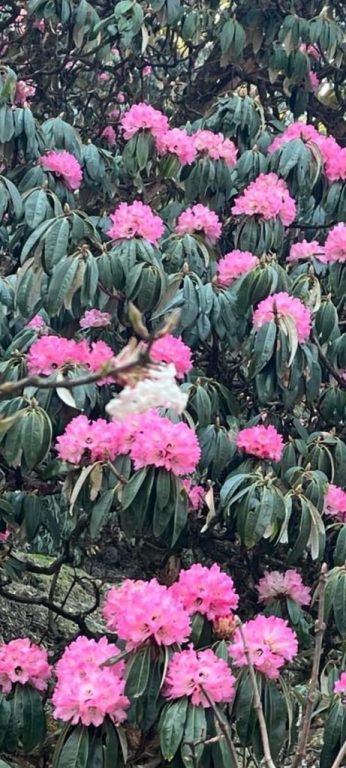
Rhododendron species are known for their stunning blooms and ecological significance. In the Himalayan ecosystem, they act as keystone species, attracting numerous birds and insects during their full bloom. These plants are not only a feast for the eyes but also play a crucial role in supporting the economic welfare of local communities. The flowers of Rhododendron arboreum, the largest of all Rhododendron species, are used to prepare a popular ‘Sharbat’ with antioxidant, anti-inflammatory, and antibacterial properties. This species is particularly significant as it is the state tree of Uttarakhand, the national tree of Nepal, and the state flower of Nagaland.
A HAVEN FOR CONSERVATION AND AWARENESS
The main objective of establishing this Rhododendron garden is multifaceted. “It aims to conserve these fascinating plant species, contribute to scientific research, and raise awareness among the general public about their ecological and economic importance,” the officer shared. The garden serves as a living laboratory where the medicinal and literary aspects of Rhododendron species are showcased. In traditional medicine, particularly in the Himalayan regions, rhododendron leaves and flowers are used to treat various ailments, such as digestive issues, respiratory problems, and skin diseases.
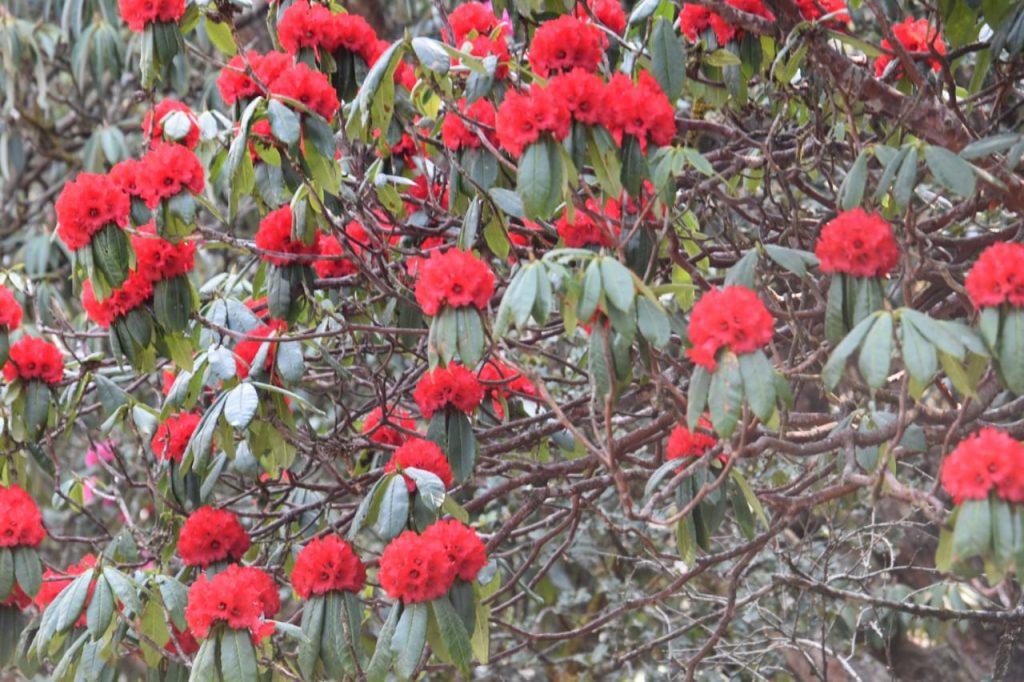
One of the garden’s highlights is a poem by the famous poet Sumitranandan Pant about the Buransh (Rhododendron arboreum). This poem, Pant’s only work in Kumaoni, vividly describes the vibrant beauty of Rhododendron flowers, using them as a metaphor for the richness and splendor of the Himalayan region’s natural beauty. The poem is displayed prominently in the garden, adding a cultural and literary dimension to the visitor experience.
CHALLENGES AND SUCCESS
The journey to establish this Rhododendron garden was fraught with challenges. “Rhododendrons typically grow at altitudes above 2000 meters, with some species thriving at heights exceeding 3000 meters.” The attitudinal and altitudinal variations posed significant hurdles for the team. Additionally, propagating Rhododendrons from seeds and nurturing them in a nursery environment required patience and perseverance.

“Our team faced two major challenges: the altitude variations and the difficulty in preparing new plants from seeds,” Mr. Chaturvedi noted. “However, through dedicated effort and numerous experiments, we successfully grew these plants in the nursery.”
A BLOOMING FUTURE
Spread over an area of three acres, the garden is a vibrant tapestry of different Rhododendron species, each showcasing a unique hue. Visitors can marvel at the diversity of colors and forms, learning about the natural habitats and characteristics of each species. This garden is not only a conservation effort but also a demonstration of the rich biodiversity of the Indian Himalayan Region.
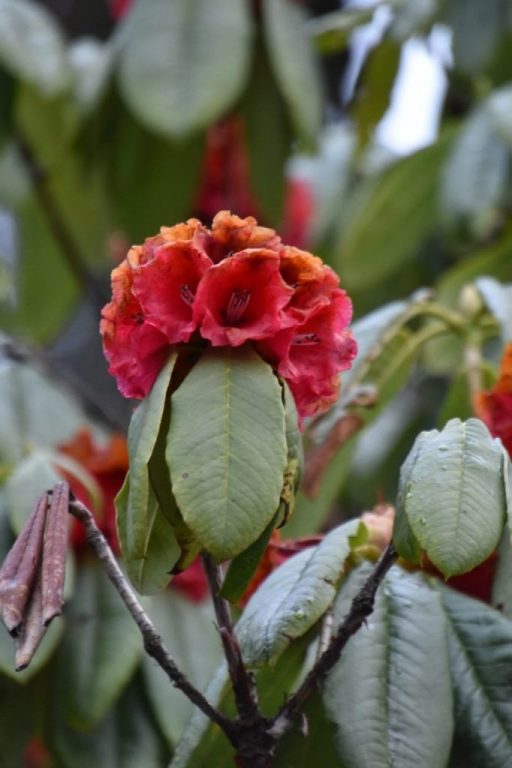
The officer further informed that Rhododendrons are also found in Jammu and Kashmir and the North East, adding to their geographical significance. The aesthetic, ornamental, and medicinal value of these plants makes them a vital part of the region’s natural heritage. By creating this garden, the Uttarakhand Forest Department aims to foster a deeper appreciation and understanding of Rhododendrons among the public.
A LEGACY OF CONSERVATION
The establishment of the Rhododendron garden in Munsiyari is a significant step towards the conservation of these species. By raising awareness and promoting scientific research, the garden contributes to the broader efforts to preserve the natural beauty and biodiversity of the Himalayan region. The display of Sumitranandan Pant’s poem further enriches the visitor experience, connecting them to the cultural and literary heritage of the area.
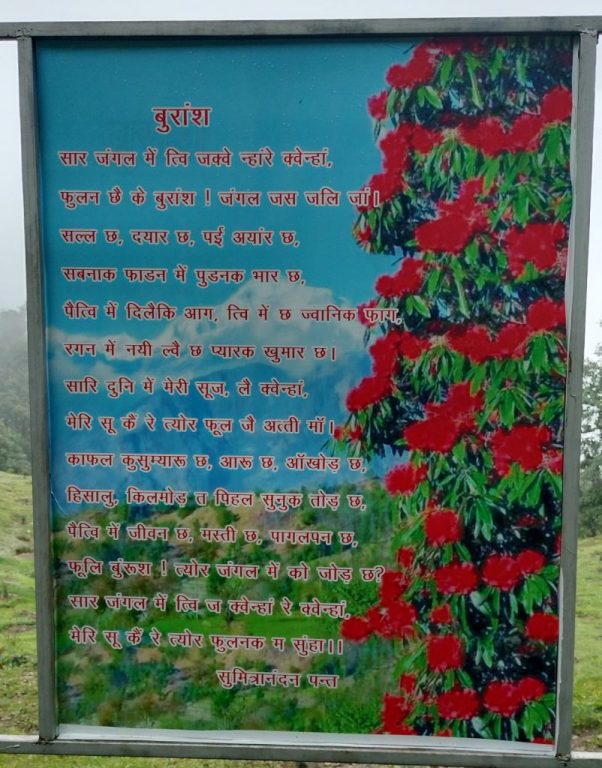
As visitors stroll through the garden, they are not only greeted by the mesmerizing blooms but also by the stories and efforts behind their cultivation.

